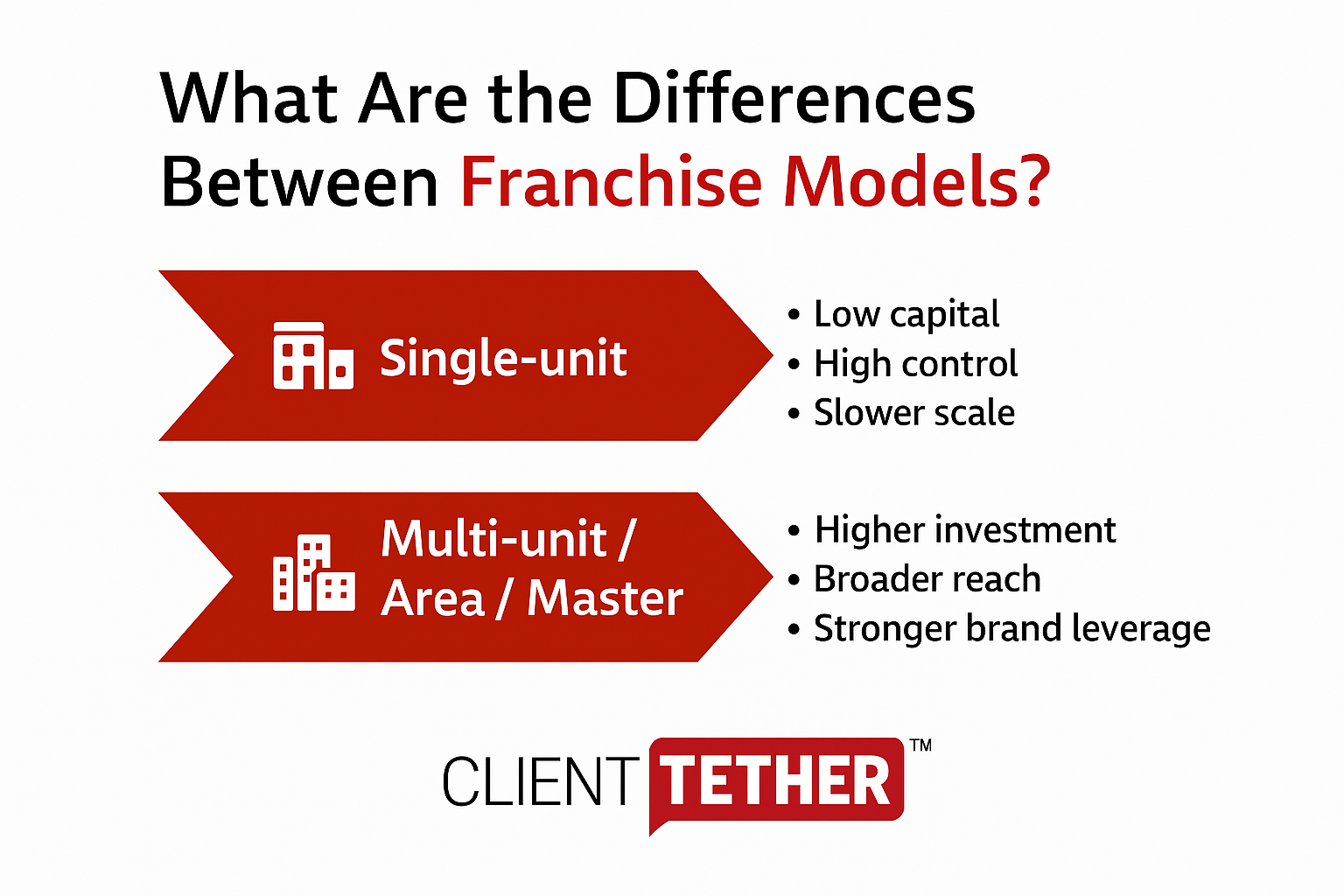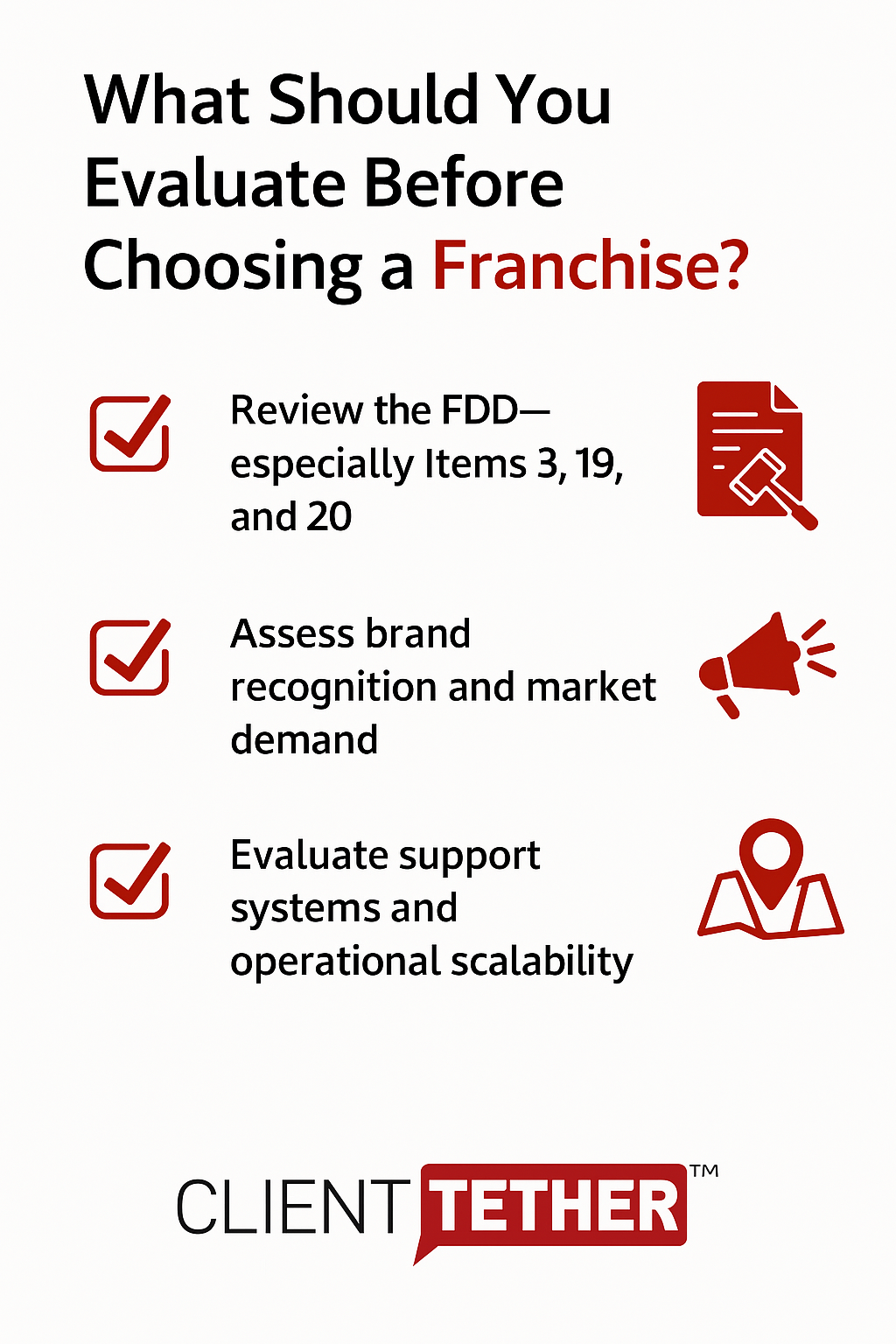A few years ago, I worked with a franchisor who wasn’t sure if they should open one location or five. They were excited, but stuck.
That indecision isn’t uncommon. We work with emerging brands navigating this exact moment: choosing the franchise model that aligns with their goals, capital, and risk tolerance.
In this guide, you’ll find the four main franchise models, and how each fits a different growth journey. You’ll also learn what to evaluate before committing and how the right systems can simplify operations from day one.
Franchise Model: What Are the Main Types?
There’s no one-size-fits-all approach to franchising. Each model brings its opportunities and challenges, and your choice shapes everything from startup costs to scalability.
Single-Unit Franchise: The Entry-Level Option
Single-unit franchises are the most common entry point. With this model, a franchisee operates one location, perfect for first-time owners or those testing the waters.
It’s low-risk, lower-cost, and ideal for hands-on operators who want full visibility over daily operations.

The tradeoff is that growth is slower. You’ll need separate approvals to open more units, and expansion depends on both performance and territory availability.
Multi-Unit Franchise: Scaling Up
Multi-unit franchising allows entrepreneurs to operate multiple locations under the same brand.
It’s a fit for growth-minded operators ready to scale quickly. These owners often gain operational efficiencies, leverage marketing spend across locations, and build stronger brand presence.
But multi-unit success takes capital and capacity. You’ll need solid systems, strong delegation skills, and infrastructure to manage teams across locations.
Area Development: Strategic Expansion
Area development gives you exclusive rights to develop a set number of units within a defined territory. It’s a step up from multi-unit franchising, with a clear timeline and geographic focus.
You get market protection and a growth roadmap. But it comes with accountability. Development timelines are firm, and missing benchmarks can put your agreement at risk.
Master Franchise: The Big League
Master franchising is a high-level model, ideal for seasoned operators ready to act like a regional franchisor.
As a master franchisee, you’re responsible for selling and supporting sub-franchisees in your territory.
The upside is enormous, but so is the responsibility. You’ll need serious capital, franchise experience, and local market knowledge to succeed at this scale.
Choosing the right franchise model starts with knowing yourself, your capital, your ambition, and your capacity to scale. There’s a model that fits everyone, from hands-on owners to ambitious empire builders. Just make sure your systems keep up with you.
Whether you’re running one unit or one hundred, a rock solid Franchise CRM helps you manage franchise operations effectively with automation, customization and a batch of other features.
Now that we’ve explored the main franchise models, let’s examine the crucial factors to consider when making your choice.
What Should You Consider Before Choosing a Franchise Model?
Financial Capacity and Risk Tolerance
Your available capital and risk appetite are two of the biggest deciding factors.
Single-unit franchises require lower upfront investment, making them ideal for first-time owners or cautious investors.
Multi-unit and master franchises require deeper financial resources, but offer bigger scaling potential.
What does success look like for you in 5 or 10 years?
Franchise startup costs vary widely, some start around $50,000 while others exceed $5 million. This depends on the brand, industry, and location.
Be sure to factor in not just the franchise fee, but also buildout costs, staff, technology, royalty fees, and marketing contributions.
Your level of risk tolerance should match your growth strategy. A single-unit location offers more control and less exposure. But if you’re aiming to scale quickly and you’re prepared to invest, multi-unit or master franchise paths might be your best route.
Business Acumen and Industry Experience
If you’re new to entrepreneurship or the franchise world, a single-unit model gives you room to learn without overwhelming complexity.
Multi-unit and area development models demand a broader skillset. You’ll need to manage larger teams, delegate operations, and make data-driven decisions across locations.
Master franchising requires leadership, franchise knowledge, and infrastructure. You’re not just managing stores—you’re recruiting, training, and supporting franchisees. Think franchisor mindset, not just operator.
Market Dynamics and Geographic Strategy
Your local market and growth territory shape what’s possible. Single-unit models often thrive in tight-knit communities where localized marketing works. They’re also ideal for testing new locations.
If your goal is regional dominance, multi-unit and area development models give you room to scale and protect territory. They allow shared resources across units and can boost visibility faster in competitive markets.
Master franchising is best suited for large domestic regions or international markets. It calls for cultural awareness, compliance know-how, and an on-the-ground presence to support sub-franchisees effectively.
How to Evaluate Franchise Opportunities Before You Commit
Decode the Franchise Disclosure Document
The Franchise Disclosure Document (FDD) is your franchise blueprint. It breaks down the business model, fees, legal obligations, and historical performance data. Reading it thoroughly is your first major decision filter.

Item 19 gives you insight into average revenues and expenses across existing franchise units. Not every brand includes this data, but when they do, it shows confidence and transparency.
Look for patterns, not just high numbers. If top-performing locations are far ahead of the rest, that could signal wide performance gaps.
Item 3 lists lawsuits involving the franchisor. Too many? That’s a sign of deeper operational issues.
Item 20 shows turnover (how many franchisees have left the system recently). High turnover often means something’s not working.
Analyze Franchisor Support and Training
Support can make or break your franchise experience. Before you sign anything, ask: Will I get proper franchise training? Who’s in my corner once I launch? How often will I get field visits or coaching?
In our experience, franchisees who receive regular operational support perform significantly better, especially when backed by automation tools that help them stay focused on growth, not admin.
Measure Brand Recognition and Market Demand
You’re joining a brand. So ask:
- Is the brand gaining momentum or losing steam?
- Does it stand out in a crowded market?
- Is there local demand for what it offers?
Examine market trends and consumer demand for the product or service. Tools like Google Trends provide insights into search interest over time.
Consider franchises in growing industries (the home services sector, for example, is projected to grow at a CAGR of 18.91% from 2019 to 2026, according to Allied Market Research).
Evaluate Financial Performance and ROI
You’re investing to grow, not just to survive. That means digging into numbers like average unit volume (AUV), operating margins, and breakeven timelines.
Crunch your ROI early. Think beyond top-line revenue. What’s left after royalties, rent, payroll, and tech costs? Sometimes, a franchise with lower sales but better margins is a smarter play.
Don’t limit your analysis to top-line revenue. Examine the entire financial picture, including operating costs, royalty fees, and marketing contributions.
A franchise with lower revenue but higher profit margins might prove a better investment than one with high revenue but slim margins.
Leverage Technology for Franchise Management
Don’t underestimate the power of a good CRM. Platforms like ClientTether automate lead follow-up, track unit performance, and simplify onboarding—saving time while helping you grow faster.
The most successful franchises we work with have one thing in common: they use smart systems from the start.
Evaluate opportunities carefully, and invest in the tools that support you for the long run.
Wrap-Up: Setting Your Franchise Model
The franchise model you select will shape your business journey.
Your capital, business acumen, and risk tolerance determine the most suitable option. Single-unit franchises offer lower-risk entry, while multi-unit and area development agreements provide greater growth potential.
Market dynamics and geographic considerations influence your choice of franchise model.
Thorough due diligence, including examination of the Franchise Disclosure Document and evaluation of franchisor support, proves essential for an informed decision. Success in franchising requires ongoing effort and adaptability.
A robust franchise management system can streamline operations and boost sales across all franchise models. The right franchise system aligns with your goals and positions you for long-term success.



